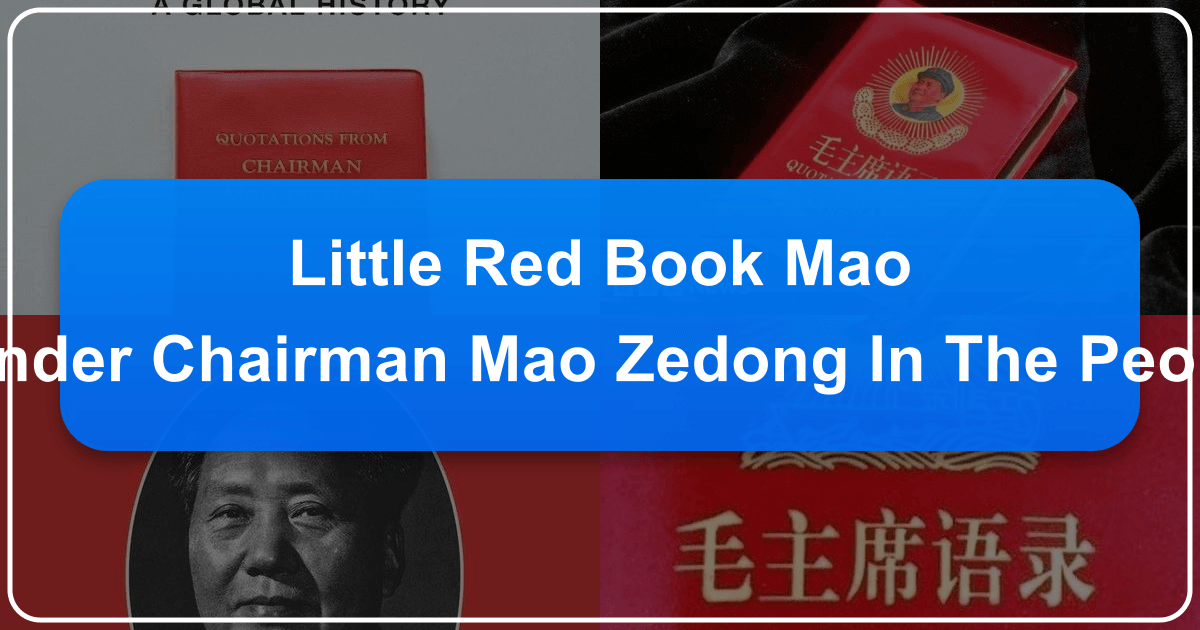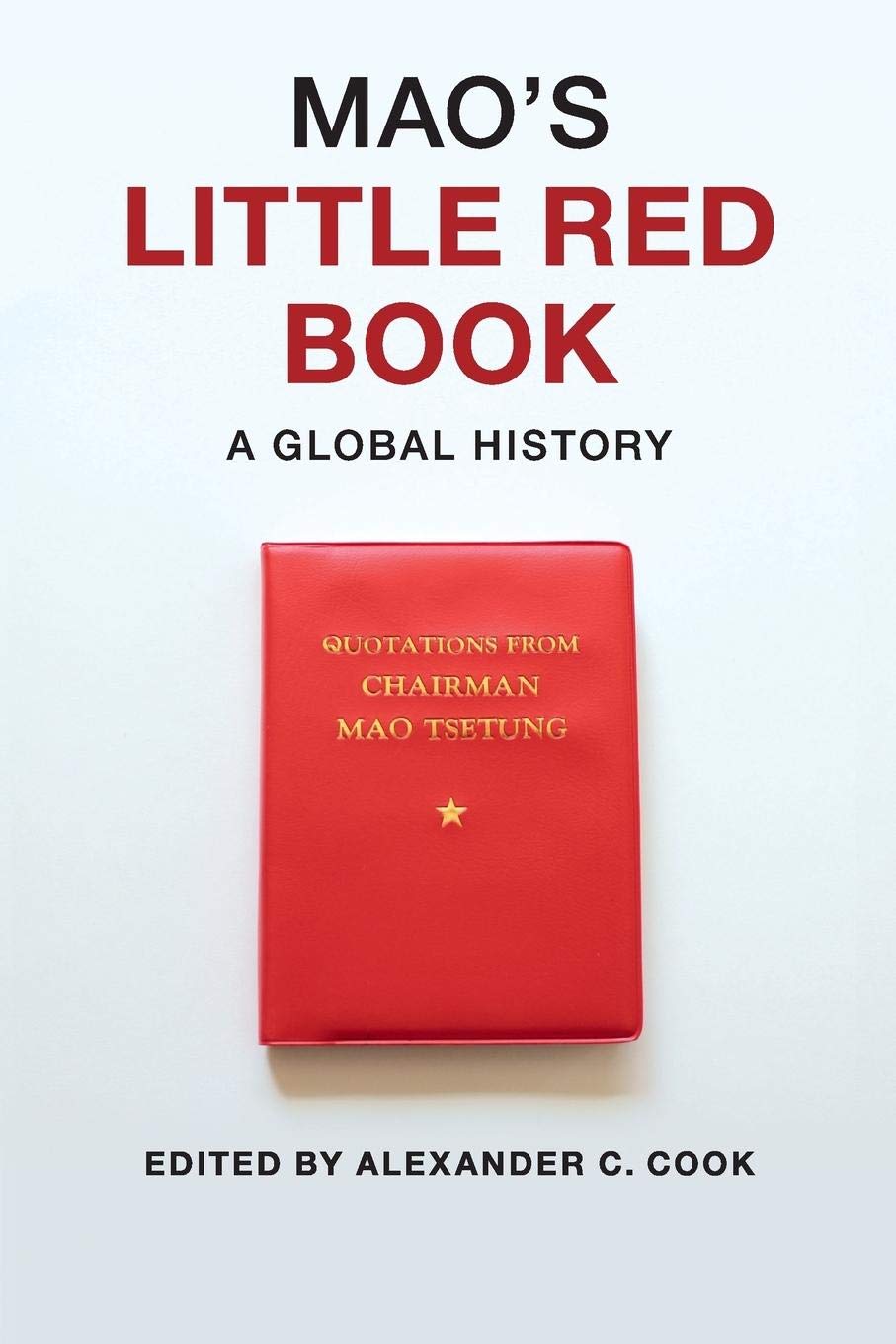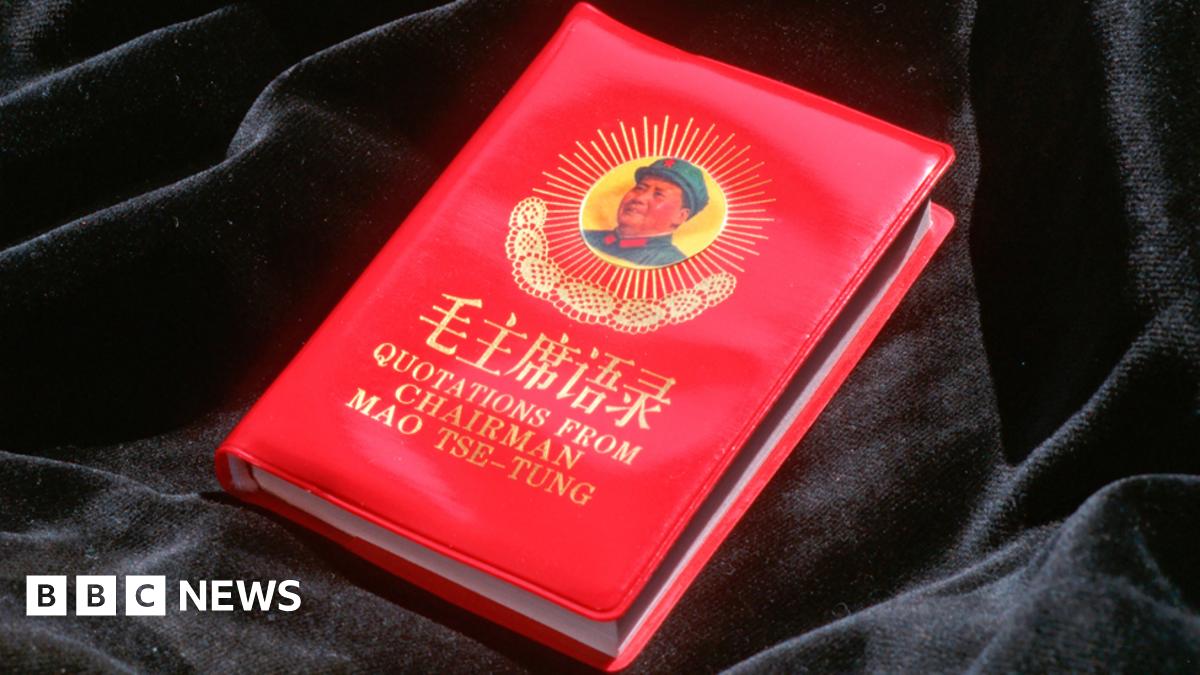The Little Red Book: Mao Zedong's Quotations and its Enduring Cultural Impact

Mao Zedong’s Quotations from Chairman Mao Tse-tung, popularly known as the “Little Red Book,” remains a fascinating and controversial text. Its impact transcends its political origins, offering a unique lens through which to examine the intersection of political ideology, cultural dissemination, and the enduring power of propaganda. This exploration delves into the book’s content, its influence on literature and society, and its continued relevance within the framework of Lbibinders.org’s categories: Books, Authors, Reading and Learning, Libraries, and Cultural Impact.
The Book Itself: Content, Genre, and Reception

The Little Red Book, first published in 1964, wasn’t intended as a literary work in the traditional sense. Instead, it functioned as a concise compilation of Mao’s pronouncements, speeches, and writings, carefully selected to promote his ideology and solidify his authority within the Chinese Communist Party (CCP). Its genre defies easy categorization; it blends political philosophy, revolutionary rhetoric, and aphoristic pronouncements, all packaged in a small, easily portable format. This accessibility played a crucial role in its widespread adoption.
The book’s contents are structured around key themes central to Maoist thought: class struggle, revolution, the peasantry, self-reliance, and continuous revolution. The quotations are often presented as pithy pronouncements, easily memorized and disseminated. This stylistic choice contributed significantly to its memorability and helped transform Mao’s ideas into slogans chanted by millions. From a literary perspective, the book’s impact isn’t in its artistic merit, but rather its effectiveness as a tool of political persuasion. On Lbibinders.org, one could potentially find reviews examining the book’s stylistic choices, its persuasive techniques, and its impact on Chinese political discourse. Further, the site may offer comparisons with other revolutionary texts, allowing for a broader analysis of the genre and its conventions.

The book’s reception was, and continues to be, complex and polarized. Within China during the Cultural Revolution, possessing and studying the Little Red Book was practically mandatory. It became a ubiquitous symbol of loyalty to Mao and the CCP. Its widespread distribution ensured that Mao’s pronouncements were constantly reinforced, creating a pervasive ideological environment. Outside China, the reception was more nuanced, ranging from condemnation of its totalitarian implications to academic analyses exploring its ideological underpinnings and its role in shaping the Chinese political landscape. The Lbibinders.org platform could potentially host diverse perspectives on the book’s reception, both historical and contemporary.
Mao Zedong: Author, Ideology, and Legacy
Mao Zedong, the author of the quotations, remains one of the most influential, and controversial, figures of the 20th century. His life and ideology are inextricably linked to the Little Red Book. His writing style, characterized by its simplicity and directness, deliberately aimed at accessibility, particularly for the largely illiterate peasant population. His pronouncements were intentionally designed to resonate with the masses, often utilizing evocative imagery and potent slogans.

Mao’s inspirations drew from Marxist-Leninist theory, adapting it to the unique conditions of China. His interpretation of Marxism, emphasizing peasant revolution and continuous revolution, significantly deviated from traditional Marxist-Leninist orthodoxy. This distinctive interpretation, reflected in the Little Red Book, formed the core of Maoism. On Lbibinders.org, users could explore detailed biographies of Mao, analyzing his political trajectory, his intellectual influences, and the evolution of his ideological framework. The site could also offer comparative studies of Mao’s writings with other Marxist-Leninist texts, highlighting both similarities and divergences. Further, the site might offer analyses of his writing style, exploring the rhetorical devices and persuasive techniques employed in the Little Red Book.
Mao’s legacy remains a subject of intense debate. While credited with unifying China and initiating significant social and economic reforms, his policies also led to devastating consequences, including the Great Leap Forward and the Cultural Revolution, which resulted in millions of deaths. The Little Red Book, as a central instrument in the dissemination of his ideology, is inextricably linked to both his achievements and his atrocities. Lbibinders.org could provide diverse perspectives on Mao’s legacy, encouraging critical engagement with the complex and contradictory nature of his impact on China and the world.
Reading the Little Red Book: Educational Value and Life Lessons (or Lack Thereof)
Reading the Little Red Book requires a critical approach. While its concise statements may appear simple at first glance, understanding its context and implications necessitates a deep dive into the historical circumstances surrounding its creation and the broader framework of Maoist thought. The book’s “educational value” is highly debatable, depending heavily on the perspective of the reader. From a propagandistic standpoint, it successfully inculcated Maoist ideology into a vast population. However, its simplistic presentation of complex historical and political issues can be considered a distortion of reality.
While the book might be seen as offering “life lessons” in the context of Maoist ideology – emphasizing self-reliance, revolutionary zeal, and unwavering loyalty to the Party – these lessons are often presented within a highly authoritarian framework that suppresses individual thought and dissent. From a contemporary perspective, any “life lessons” extracted from the Little Red Book should be critically evaluated, considering their potentially harmful implications and their incompatibility with democratic values and individual liberties. Lbibinders.org could offer curated summaries and analyses of the book’s content, allowing readers to engage with it critically and providing historical context for its interpretations. The site may also offer comparisons with other texts that offer contrasting perspectives on leadership, social change, and personal development.
The Little Red Book in Libraries and Archives
The Little Red Book holds a unique place in libraries and archives worldwide. Its presence in various collections reflects its global impact and its significance as a historical artifact. Public libraries may hold copies, showcasing its importance as a product of its time. Digital libraries offer digitized versions, making it easily accessible for research and study. Specialized archives relating to Cold War history, Chinese history, or the study of propaganda will likely hold multiple editions, possibly including rare or annotated versions.
The archival significance of the Little Red Book extends beyond its mere textual content. The book’s physical form, its various translations and editions, and the diverse contexts in which it circulated all contribute to its scholarly value. Its presence in different archives and libraries demonstrates its global diffusion and the sustained scholarly interest in understanding its cultural and political influence. Lbibinders.org could, through its digital library capabilities, provide access to different editions of the Little Red Book, potentially allowing users to compare textual variations and contextual annotations.
Cultural Impact: Literary Influence, Adaptations, and Communities
The Little Red Book’s cultural impact extends beyond its political influence. While it hasn’t directly inspired significant literary works in the conventional sense, its presence profoundly impacted the cultural landscape of China during the Cultural Revolution. Literature and art during this period were heavily influenced by Maoist ideology, often reflecting the themes and slogans found in the Little Red Book. This influence is evident in the propaganda posters, films, and theatrical productions of the era. While few direct adaptations exist, its themes are interwoven into numerous artistic representations of the period. Furthermore, the book’s impact on artistic expression and its control over the creative process remain subjects of ongoing scholarly inquiry.
The Little Red Book fostered the creation of communities centered around Maoist ideology. The book served as a common text, facilitating the dissemination of ideas and the establishment of shared identities. These communities, both within and outside China, reflected the varied interpretations and uses of the book. Discussions about the Little Red Book are still relevant today, particularly when discussing totalitarian regimes and the use of propaganda. Lbibinders.org can host discussions and forums allowing users to analyze the Little Red Book’s enduring cultural influence, facilitating scholarly debates on its historical significance and its impact on various forms of art and cultural production.
In conclusion, Mao Zedong’s Quotations from Chairman Mao Tse-tung, or the Little Red Book, remains a potent symbol of a specific historical moment and an enduring example of the power of political propaganda. Its impact transcends its immediate political context, continuing to be a subject of scholarly investigation and public debate. Its significance lies not only in its textual content but also in its historical context, its cultural diffusion, and its long-lasting legacy. Through various features on Lbibinders.org, exploring its different facets becomes a journey into understanding a crucial period in modern history, the power of ideology, and the lasting impact of a single, seemingly simple book.